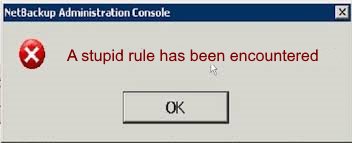A New LTB Rule that Nobody Asked For
Most Ontario landlords know that the law governing landlord and tenant relationships is called the Residential Tenancies Act (the ‘RTA’). But most don’t know that the Landlord and Tenant Board (the ‘LTB’), the agency charged with enforcing the RTA, also has a set of documents called the Rules of Practice. The Statutory Power Procedures Act gives the LTB the power to make its own Rules.
The Rules of Practice are the “how to’s“. How to count days, how to get a summons to appear, how to serve a document, how to file a document, how to get a hearing recording, how to file a review of an order etc. The 26 Rules can be found here. The Rules are changed from time to time with input from the LTB’s Rules Committee.
On December 14th, 2018 the LTB announced the release of a new set of Rules and Interpretation Guidelines. One of the Rules they changed was the old Rule #5, which became the new Rule #3. (There was some re-numbering and consolidation).
For as long as I’ve been in this business, including my time as an adjudicator, there have been Rules regarding service of documents. And for as long as I remember, an exception to the general service Rule was permitted for a Notice of Entry, which could be served by placing the notice on the door.
The wording of the old Rule #5 for notices of entry under s.27 of the RTA read as follows:
5.1 A person may give a notice or document to another person by any of the following methods:
(d) for service on a tenant of a notice under section 27 of the RTA, by any other permitted method of service, or by posting it on the door of the rental unit;
The logic behind this exception was that the Notice of Entry (the ‘NOE’) is different from termination notices like the N4 or N5, in that it carries no stigma. The landlord has a right to inspect. In fact the landlord has an obligation to inspect at least annually, not just to comply with his or her obligation to make sure that the unit is properly maintained, but for purposes of Ontario Fire Code compliance and of course to protect their property.
The online Rule change summary posted on December 14th conveniently omitted the change, yet the Rule itself was clear….the right to serve NOE’s by posting them on the door is now gone.
I wrote the Vice Chair of the LTB and Social Justice Cluster of Tribunals well before Christmas. I was a bit ticked off that they had hidden this important Rule change from the online summary. On January 5th, the LTB quietly made the online change and included the NOE service change in the summary, and on January 6th I received a response from the Vice Chair thanking me for my email.
There are 3 issues that concern me:
How is the Average Landlord to Know?
Nobody reads the Rules and Guidelines except for paralegals, and perhaps a few careful landlords but only when interacting with the LTB for an eviction proceeding. A landlord without any hint that the Rule has been changed will have no reason to look it up. They will continue serving on the door, illegally. Their notices of entry will be defective, and they will have no remedy if the tenant doesn’t let them in.
What if the Tenant Lives in a Condo with Private Mailbox?
If the tenant is trying to avoid service in order to prevent entry and discovery of malfeasance, then the tenant need only refuse to answer their door, and block the slot under the door. The mailbox is locked and private. In many condos, the unit entry doors are sealed tight and documents can’t be slid under the door. I’ve also run into my fair share of landlords with stories that condo management won’t even let them into the elevator as they are no longer the occupant. Fax is still a permitted method of service under the Rules, but how many tenants have a fax number. As of this recent round of Rule changes, email is now permitted for notices of entry, but only if the tenant consents in writing. The tenant running a drug lab or causing damage will not consent. So the landlord is left with mail as the only method of service. Mail is deemed to add 5 days to the service of ANY document under the RTA. So instead of 24 hours written notice, the landlord needs to give 6 days notice, 144 hours notice of entry.
Where did the Need for the Change Come From?
Nobody has been asking for this change, and landlords have not been consulted. This was arbitrary and perhaps even strategic, the LTB once again doing it’s best to assist tenants in coming out on top in a dispute. Anyone who has ever called the LTB call centre for advice knows that landlords get short shrift.
For those who thought that common sense might return with the election of a Conservative government, it certainly hasn’t. For the small landlord, things have only gotten worse.


